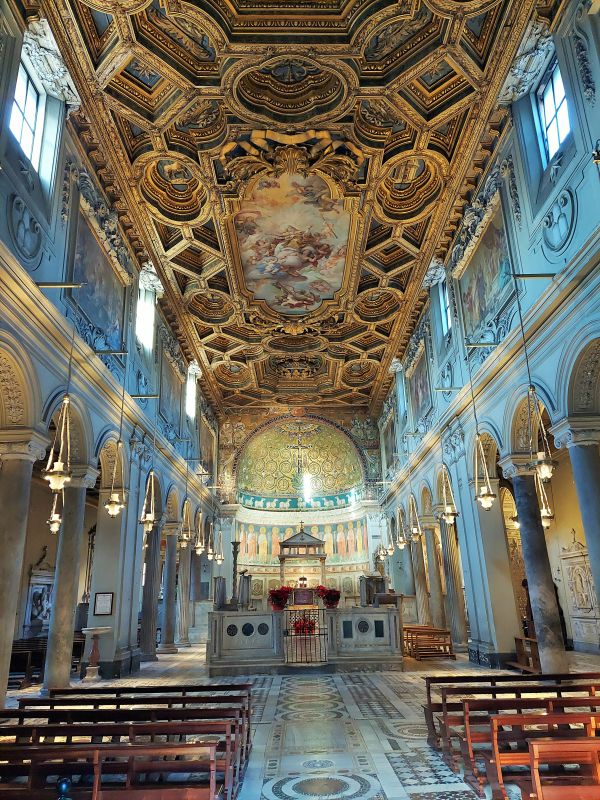The Basilica of San Clemente is located in the very heart of the Eternal City, close to the Colosseum. It is one of the most fascinating temples of Christianity. Its uniqueness lies not only in its rich history and religious significance. Also in the hidden underground levels beneath its floor.
History of the Basilica
The Basilica of San Clemente is dedicated to the third pope after St. Peter, St. Clement I, who died a martyr’s death. It is one of the places in Rome that allows us to understand the historical layers of the city. The current basilica dates back to the beginning of the 12th century, built on the foundation of a 4th-century church. This, in turn, rests on even older buildings. One of these is a 1st-century house that likely served as a meeting place for early Christians (titulus). The deepest level houses a Mithraeum – a temple dedicated to Mithras, a god from Asia Minor. At two points along the route, one can hear the swiftly flowing underground stream.
The discovery of the church’s lower levels occurred in the 19th century by an Irish priest, Joseph Mullooly. One of the greatest gems is the well-preserved frescoes depicting scenes from the life of St. Clement. The attention of Italians is captured by the fresco „The Legend of Sisinnius” (11th century). It contains one of the oldest inscriptions in the local Romanesco dialect. The crypt also houses the grave of St. Cyril, to which pilgrims from Balkan countries journey.
In the present basilica, it’s worth noting the beautiful apse mosaic or the floor in the distinctive Cosmatesque style. The altar contains the grave of St. Clement. The magnificent wooden ceiling dates back to the 18th century.
Basilica of San Clemente – Visiting
The Basilica of San Clemente is open from 9:00-12:30 and 14:00-18:00 (on Sundays 12:00-18:00). Entrance to the church is free, but a ticket to enter the underground areas costs 10 euros (there are also reduced tickets). Tickets can be bought on-site or reserved online. Allocate about 40 minutes for a leisurely visit.
Explore Rome further with my other articles: Palazzo Colonna, Via Appia Antica, Vicus Caprarius, La Scatola Archeologica, Trajan’s Market, Case Romane del Celio, Museum of the Forma Urbis.


